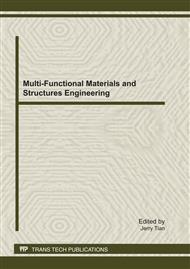p.59
p.65
p.73
p.79
p.84
p.90
p.96
p.101
p.107
The Application of Neural Network in Dam Safety Monitoring
Abstract:
Dam safety monitoring is an important means for remaining the dam safe, while stress-strain monitoring has been an extremely important part in the dam monitoring. Sometimes the traditional forecasting methods are not high accuracy, so, in order to improve the accuracy of prediction. This paper presents a dam strain prediction model based on Least Squares Support Vector Machines(LS-SVM). Applied in one dam, LS-SVM shows the advantages of good robustness and high prediction accuracy. The strain prediction accuracy improves a lot than using the traditional stepwise regression method, so it provides reliable and effective ways and means in dam strain analysis.
Info:
Periodical:
Pages:
84-89
Citation:
Online since:
July 2011
Authors:
Keywords:
Price:
Сopyright:
© 2011 Trans Tech Publications Ltd. All Rights Reserved
Share:
Citation:


